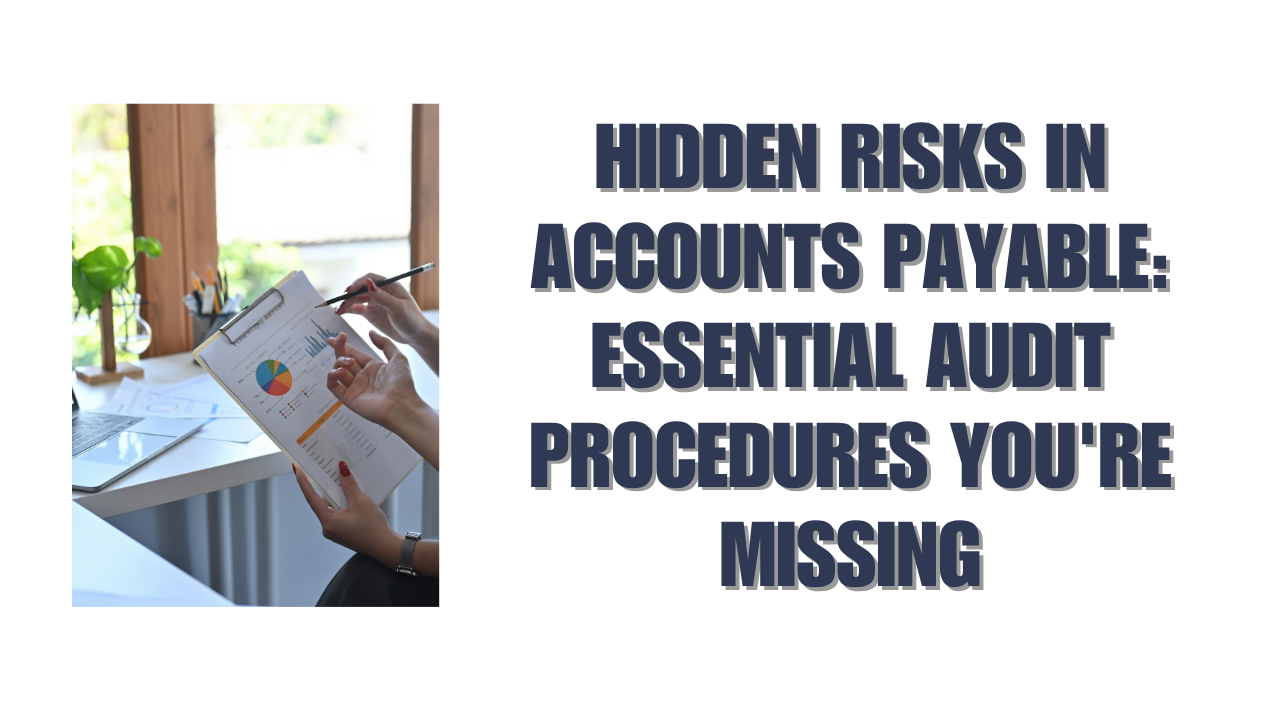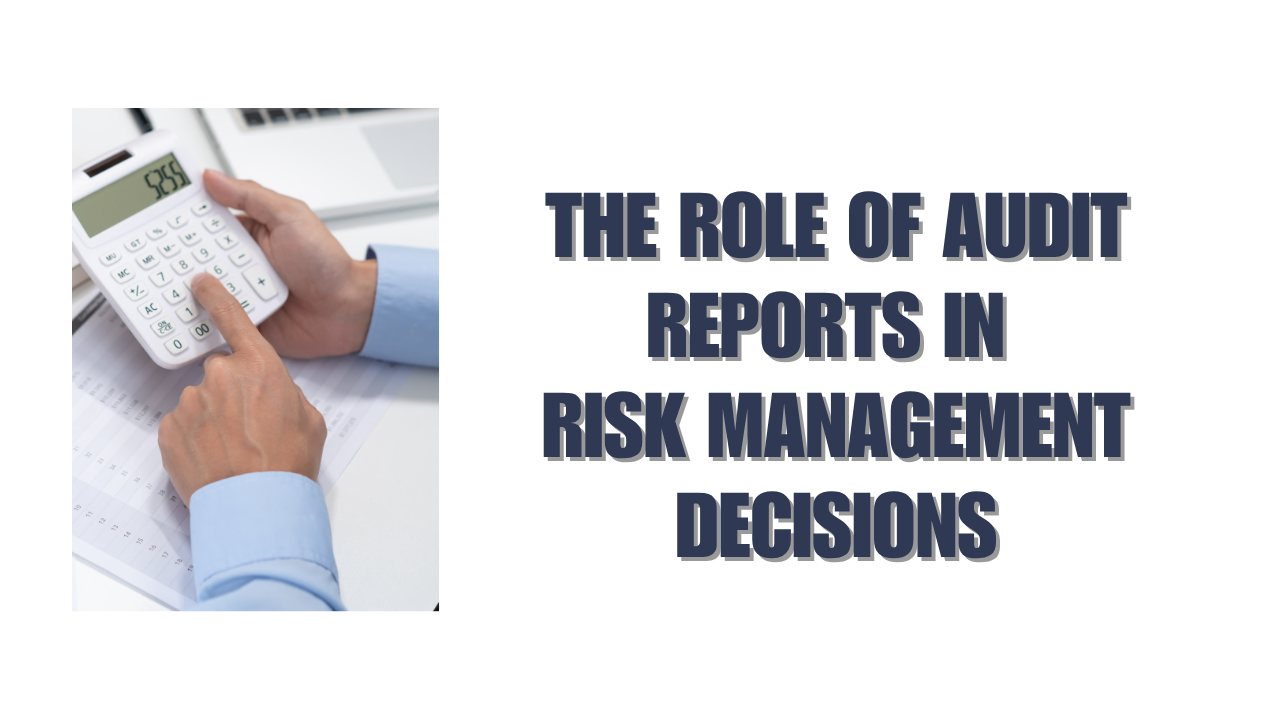Your organization could lose 5% of annual revenue to fraud without proper audit procedures for accounts payable. The Association of Certified Fraud Examiners expresses this risk that makes accounts payable a vital audit area. Most businesses (53%) understand this threat and have made AP coverage and data analytics their top strategic priority.
Organizations often miss significant verification steps in their accounts payable audit procedures. Understated accounts payable and expenses create the biggest problem as they artificially boost net income. On top of that, it has become vital to ensure accurate period-end payables due to increasing digital transactions. Regular complete audits prove necessary for financial stability even though internal audit procedures might seem enough. Finance leaders’ main concerns in 2024 revolve around security issues, fraud, and phishing attempts. Your business needs to identify the right audit procedures to detect unrecorded trade accounts payable.
Hidden Liabilities: What Most AP Audits Miss
Businesses regularly audit their accounts payable, yet they miss hidden liabilities that can affect their financial statements by a lot. These overlooked items pose the biggest risk to financial accuracy and stability. A 2020 study showed that poor internal controls led to almost one-third of all fraud cases. This shows why complete AP audits help uncover these hidden obligations.
Unrecorded liabilities in post-period payments
Unrecorded liabilities can make profits look better by leaving out expenses from financial statements. Companies that don’t record certain expenses paint an inaccurate picture of their financial health. Some organizations choose to understate liabilities instead of assets or revenues because these numbers directly show performance and budget compliance.
Common sources of unrecorded liabilities include:
- Checks held for weeks or months while keeping the checking account balance
- Bills hidden in drawers at year-end to avoid recording payables and expenses
- Unpaid salary or vacation time not recorded
- Revenue and expense records that don’t match due to delayed payments
These practices can hurt relationships with suppliers, damage credit scores, and result in stricter credit terms. This becomes a bigger issue in tough economic times when businesses slow down their payments due to cash flow problems.
Vendor invoice timing mismatches
Invoice timing gaps create hidden liabilities that many audits miss. About 30% of invoices contain errors, and these mistakes often benefit suppliers while passing through approval checks. This problem gets worse with freight, media, and materials transactions, where prices and charges often change after the first purchase order.
Timing mismatches happen when:
- Invoices show up after the financial period ends
- Expenses get posted in wrong accounting periods
- Suppliers wait to send invoices until after year-end
- Current expenses get paid in later periods
These mismatches lead to transactions getting approved without proper checks. The risk of errors and fraud grows as companies handle more transactions in different divisions.
Which of the following audit procedures is best for identifying unrecorded trade accounts payable?
Looking at cash payments made after the balance sheet date works best to find unrecorded trade accounts payable. This method, known as “search for unrecorded liabilities” (SURL), uses a list of all cash payments made after year-end to check if related payables should have been included in the previous period.
This works because payments made right after period-end often link to liabilities that existed during the reporting period but weren’t recorded. Auditors should:
- Get a complete check register for the period after the audit
- Set dollar limits to check subsequent payments
- Look at invoices for these payments to decide if they belong
- Check payables recorded just before and after the balance sheet date
The “risk period” needs careful thought – this is when unrecorded liabilities might show up. This period’s length should match the auditor’s risk assessment based on how the client records payables and their current financial health.
The method works better when auditors know how businesses record payables and their timing. Companies with money problems or during economic downturns need extra attention to the time between recording payables and writing checks.
Substantive Audit Procedures for Accounts Payable
Substantive testing serves as the foundation of any detailed accounts payable audit. This testing gives direct evidence about financial statements’ accuracy and completeness. My experience shows these specific procedures help spot discrepancies that regular reviews might miss.
Cutoff testing for year-end transactions
Cutoff testing shows whether companies record transactions in the right accounting period. This process needs a review of expenses or purchase transactions near the cutoff date. The goal is to check if each transaction lands in the correct period based on invoice dates. A December 31 year-end audit needs transactions from late December and early January to verify proper recording.
The process works like this:
- Get the last three goods received notes and matching purchase invoices
- Check dates against the audited accounting period
- Look at the first three goods received notes and invoices from the next period
Note that cutoff testing spots cases where companies might hold back expense recording to make profits look better.
Three-way match: PO, invoice, and receipt
Three-way matching acts as a vital control system. Companies that don’t catch unauthorized or fraudulent transactions can lose about 5% of yearly revenue. This method checks three key documents against each other: purchase order, delivery receipt, and supplier invoice.
My verification covers these key areas:
- Purchase order verification: Complete information, proper approval, and correct general ledger codes
- Delivery information: Matching ordered and delivered quantities
- Supplier invoice: Amounts match the approved purchase order
To name just one example, see a construction company ordering 12,000 square feet of vinyl siding at $17.06 per square foot. The three-way match confirms delivery and the invoice amount of $204,673.23 before payment.
Vouching subsequent disbursements
Vouching subsequent disbursements proves the quickest way to find unrecorded trade accounts payable. This method looks at payments after the balance sheet date to see if related payables should be in the previous period.
The process starts with setting a cash disbursements threshold and picking dates after the balance sheet date. Each selected disbursement needs documentation of check numbers, payees, amounts, and payment dates. The final step reviews whether these are valid subsequent events or earlier liabilities.
Reconciliation of AP ledger to general ledger
The accounts payable subledger to general ledger reconciliation gives significant assurance about transaction recording in financial statements. This step finds three difference types: subledger adjustments, general ledger corrections, and valid reconciling items.
Running the Prepare Payables to General Ledger Reconciliation process starts things off. This selects data for the Summary section of the Payables to Ledger Reconciliation Report. A successful report run gives the latest information needed for reconciliation.
The core parameters include the ledger, business unit, accounting period, and intercompany transaction inclusion. Common discrepancies come from:
- Batches posted to the general ledger after edits
- Direct adjustments to the accounts payable account
- Report date range mismatches
- Payables transactions without general ledger posting
These four substantive procedures create a detailed foundation for accounts payable verification that covers financial accuracy and control essentials.
Internal Control Gaps That Enable Fraud
Accounts payable departments without proper internal controls create perfect conditions for fraud. The Association of Certified Fraud Examiners reports that organizations lose an average of NZD 3,041,103.10 per employee fraud case. Businesses worldwide lose about 5% of their revenue each year to such fraud. The most worrying fact is that almost 29% of businesses affected by fraud had no internal controls over accounts payable.
Lack of segregation of duties in AP processes
Many organizations fail to implement segregation of duties effectively as a internal audit procedure for accounts payable. The simple principle ensures that no single employee can commit and hide fraudulent activities. Many companies still allow one person to handle multiple critical functions – they can create purchase orders, approve invoices, and authorize payments.
A 2022 PwC study shows that 38% of businesses with revenue under NZD 170.56 million faced fraud. About 22% of these businesses lost NZD 1.71 million. Organizations can prevent such losses by separating these responsibilities:
- Different employees should handle purchase orders and payment approvals
- Staff who handle cash or checks shouldn’t authorize purchases
- People who issue payments shouldn’t approve those transactions
Unauthorized vendor creation and payments
Poor controls around vendor management create major risks. We noticed that duplicate or inactive vendors in master files lead to frequent duplicate payments and potential kickback schemes. These schemes involve employees working with suppliers who inflate invoices and split the extra payment after processing.
Common problems include:
- No separate approval for adding new vendors
- Poor monitoring of vendor master files
- Limited verification of changes to vendor information
A vital but often overlooked audit procedure for accounts payable involves regular checks of the vendor master file. These checks help spot inactive suppliers or patterns where the same vendors keep getting contracts.
Absence of approval workflows for large disbursements
Many enterprises struggle to enforce payment approval workflows throughout their organization. Large payments might happen without proper oversight or documentation when structured approval processes don’t exist.
Good approval workflows should have:
- Approval requirements that increase with payment amount
- Required supporting documentation attachments
- Two signatures for payments above certain amounts
Written policies should set authorization levels based on invoice amount and responsibility center. Higher amounts need more approvals. Large payments might need approval from the CFO, CEO, or board.
Organizations using different audit procedures for accounts payable should check if their current systems enforce role-based authorization models. These models define who can create payments, what approvals they need, and who can transfer payments to ERP systems.
Audit Documentation and Evidence Collection
Good documentation forms the foundations of accounts payable audits. Research shows that companies with complete audit documentation face fewer compliance problems and bounce back from audits faster.
Required AP audit documents checklist
The right documentation speeds up the AP audit process and will give a solid compliance record. Here’s what you need:
- Financial records: AP ledger, expense reports, bank statements, vendor invoices, and accounting journal entries
- Unrecorded liabilities: Signed vendor contracts not yet entered into AP records
- Year-end financial statements: Balance sheet, cash flow statement, and income statement
- Internal controls documentation: Approval procedures and payment processes
Companies without well-documented SOPs often hit audit delays until they update their procedures. On top of that, your general ledger forms the foundation of the audit process.
Tracking audit trails in digital vs paper systems
Paper-based systems create an illusion of control while electronic systems deliver real transparency. Paper records don’t deal very well with tracking, monitoring, and organizing—people can misplace, shred, or steal them.
Digital audit trails, however, automatically log every document interaction with detailed timestamps. This chronological evidence is a great way to get:
- Transaction tracking from start to finish
- Quick spotting of errors or discrepancies
- Better compliance with internal controls
Companies using digital audit trails recover about NZD 1.71 million that would otherwise be lost to financial statement fraud.
Management representation letter for AP disclosures
The management representation letter plays a crucial final role in the AP audit process. This document confirms that financial statements accurately show all accounts payable transactions. The letter must include:
- Confirmation that all transactions appear in financial statements
- Details about any known or suspected fraud affecting the company
- Management’s acknowledgment of their responsibility to prepare financial statements
The auditor should receive this letter with signatures from financial statement authorities, dated as close as possible to the audit report date.
Conclusion
The hidden risks in accounts payable can quietly distort financial performance, mislead stakeholders, and open the door to serious fraud. While many businesses believe their internal reviews are enough, real protection comes from applying robust, targeted audit procedures that reveal what’s often overlooked. Unrecorded liabilities, invoice timing mismatches, weak controls, and poor documentation all contribute to material misstatements, and in today’s fast-paced digital environment, those mistakes carry real consequences.
Accounts payable audits must go beyond routine checks. Procedures like subsequent disbursement reviews, three-way matching, and AP-GL reconciliations are not just technical steps, they are financial safeguards. Likewise, enforcing segregation of duties and tracking digital audit trails ensures fraud doesn’t find room to grow.
At a time when fraud risks are rising and compliance expectations are sharper than ever, precision in AP audits is not optional-it’s strategic. The organizations that invest in complete, well-structured AP audit frameworks now will be the ones that remain resilient, credible, and audit-ready tomorrow.






